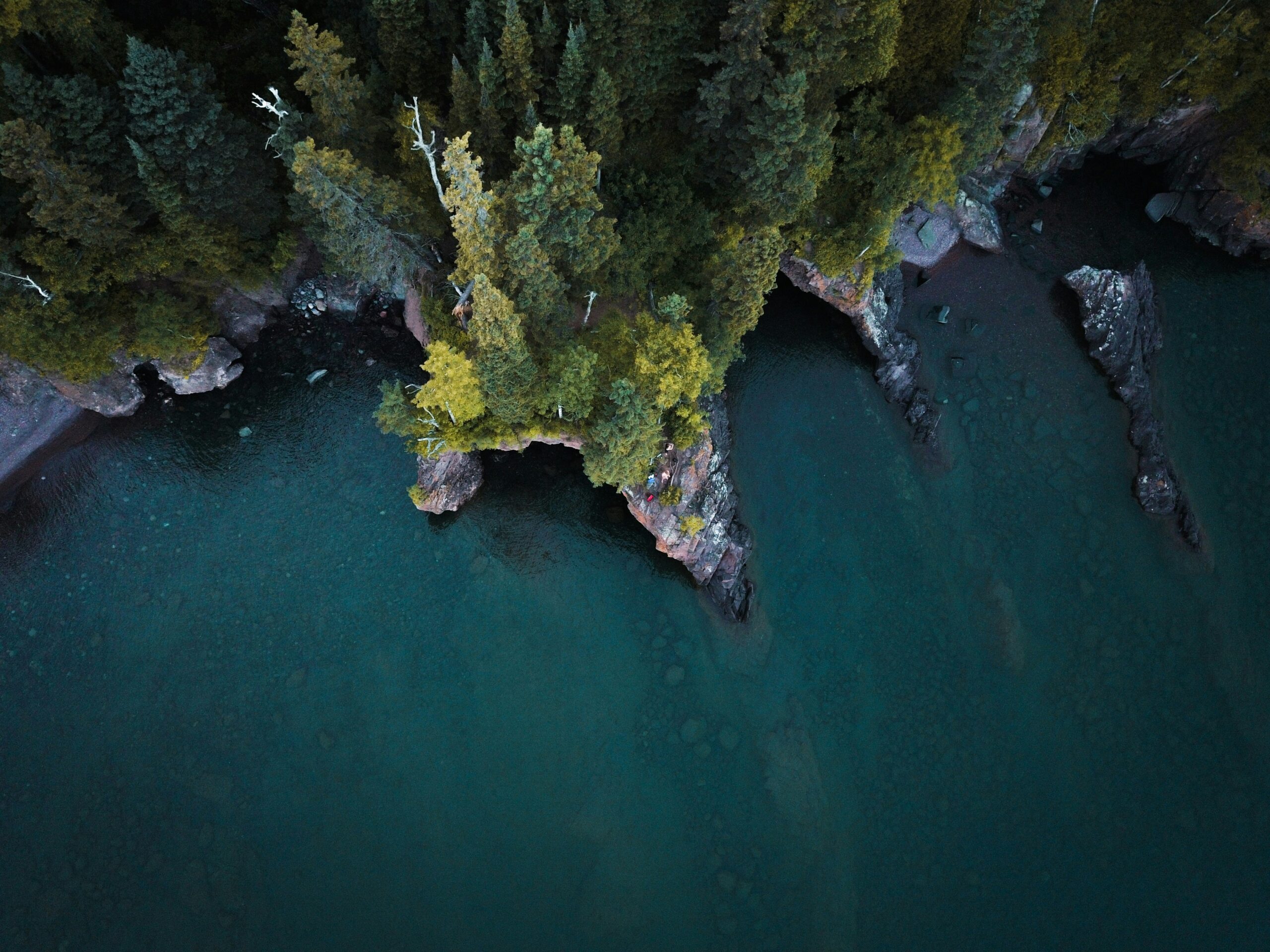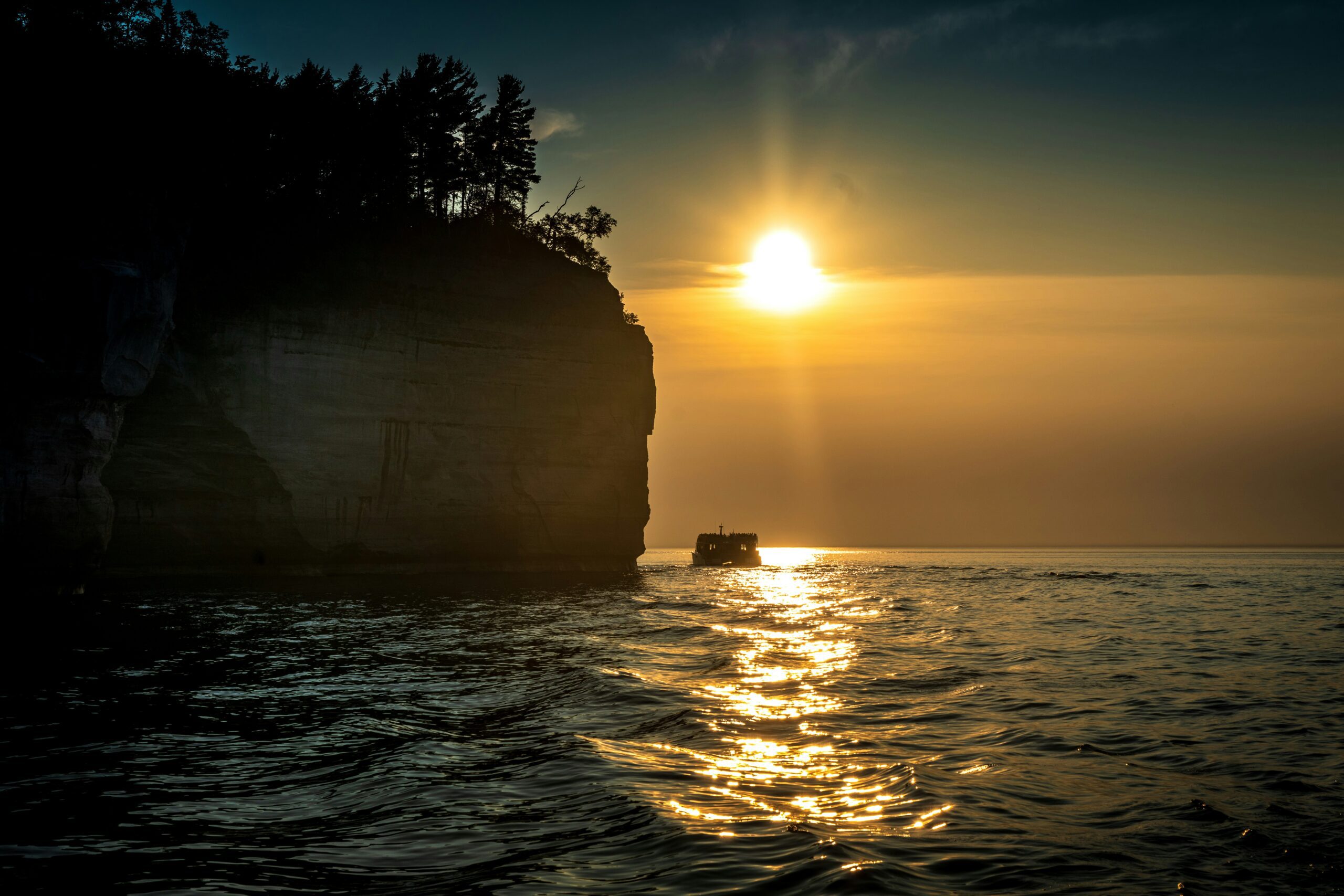At the Houghton Visitor Center, hours are Monday to Friday 10:00 AM – 4:00 PM from April 17 to May 31, and 8:00 AM – 6:00 PM from June 1 to September 15. From September 16 to May 31, it’s 10:00 AM – 4:00 PM.
For the Rock Harbor and Windigo Visitor Centers, they are open daily from 8:00 AM – 5:00 PM from June 3 to September 21, with reduced hours in May, June, September, and October.
Isle Royale National Park charges a $7 per person daily entrance fee. Children 15 and under are free. An annual pass is available for $60. All Federal Recreation Passes are also accepted.
Ferry from Houghton or Copper Harbor (MI), or Grand Portage (MN). Seaplane from Houghton or Grand Marais. Private boats allowed with permits. Charter boats also available.
Parking for cars, trailers, campers, and RVs is available at the Hat Point Ferry Terminal and other departure points, with a daily parking fee. Overnight parking is allowed, but not at Hat Point Marina. No vehicles are permitted on the island itself.
Accessibility & permits
Emergency
- Cell service availability:Partial
Information not accurate?
Help us improve by making a suggestion.
Located in the northwest corner of Lake Superior, Isle Royale National Park is a remote wilderness archipelago of more than 400 islands. A haven for outdoor enthusiasts, it offers hiking, paddling, and wildlife encounters amid unspoiled landscapes, and is known for the moose-wolf predator-prey study, ancient geology, and shipwreck diving.
- Area (mi²)
- 850
- Annual visitors
- 20 000
- Established year
- 1940
Top 3 Facts about Isle Royale National Park
The island features the Greenstone Ridge Trail, a 64 km hike that spans from one end to the other, passing through northwoods wilderness and reaching the peak of Mount Desor at 425 meters. This trail is typically completed in 4 or 5 days.
The island’s geological history dates back over a billion years, making it one of the oldest national parks in the United States. Its rugged terrain, shaped by ancient volcanic activity and glacial processes, offers a glimpse into the Earth’s distant past.
The waters surrounding Isle Royale are known as “Shipwreck Alley” due to the large number of vessels that have met their fate in the treacherous waters of Lake Superior. Over 25 shipwrecks lie beneath the surface, offering divers a fascinating glimpse into maritime history.
Family programs
- Junior Ranger
- Family Camping & Overnight
- Water-based Adventures
Travel Tips
Plan Ahead
Isle Royale is remote and facilities are limited. Plan your trip well in advance, including transportation, camping permits, and accommodations. Consider the season and weather conditions when planning your visit.
Pack Appropriately
Be prepared for changing weather conditions and rugged terrain. Pack clothing layers, sturdy hiking shoes, rain gear, and essential supplies such as food, water, and navigation tools. Bear-proof food containers are required for backcountry camping to prevent wildlife encounters.
Respect Wildlife
Isle Royale is home to a variety of wildlife, including moose and wolves. Keep a safe distance from animals and observe them from a distance. Make noise while hiking to alert wildlife of your presence and reduce the chance of surprising them.
Stay Informed
Camping permits are required for all overnight stays in the park. Make sure to obtain permits in advance, especially during peak season, and familiarize yourself with park regulations and Leave No Trace principles.
Seasons
Spring is a magical time to visit Isle Royale National Park as the island comes alive with the vibrancy of new growth and wildlife activity. From late April through May, the island emerges from winter’s grip, with melting snow revealing lush green forests and blooming wildflowers dotting the landscape. Spring is an ideal season for birdwatching, as migratory birds return to the island, filling the air with their songs. Additionally, the park sees fewer visitors during this time, allowing for a more tranquil and intimate experience with nature.
Summer is the most popular time to visit Isle Royale National Park, offering mild temperatures and long daylight hours perfect for exploring the island’s trails, lakes, and rugged coastline. From June through August, visitors can enjoy a wide range of outdoor activities, including hiking, kayaking, fishing, and wildlife viewing. The island’s campsites and hiking trails are fully accessible during this time, and ferry and seaplane services operate regularly, making it convenient to travel to and from the mainland. However, visitors should be prepared for occasional crowds, especially at popular campgrounds and attractions.
Autumn transforms Isle Royale National Park into a breathtaking mosaic of red, orange, and gold as the island’s forests transition into their fall colors. September and October offer cooler temperatures and fewer visitors, providing a serene and picturesque setting for hiking and photography. Fall is also an excellent time for wildlife viewing, as animals prepare for winter and the island’s resident moose become more active. Visitors can experience the tranquility of the island’s wilderness while enjoying the beauty of the changing seasons.
Winter on Isle Royale National Park offers a unique and serene wilderness experience for adventurous visitors. From late November through March, the island is blanketed in snow, creating a peaceful and otherworldly landscape perfect for cross-country skiing, snowshoeing, and ice fishing. While the park’s facilities are closed during the winter months, intrepid travelers can access the island via private snowmobiles or by participating in guided winter camping expeditions. Winter on Isle Royale offers solitude and solitude amidst the pristine beauty of Michigan’s Upper Peninsula.
Information not accurate?
Help us improve by making a suggestion.
Frequently Asked Questions
Ready to dive into what Isle Royale National Park has to offer? Let’s tackle some of the burning questions you might have as you plan your visit!
-
The closest city to Isle Royale is Houghton, Michigan, located in the Upper Peninsula. Houghton is where the park’s headquarters are situated and serves as a primary departure point for ferries and seaplanes to the island.
-
The Albert Stoll Jr. Memorial Trail, also known as the Stoll Memorial Trail, is the easiest hiking trail. It is a relatively flat and easy 3.5-mile figure-eight loop that runs along Lake Superior and Tobin Harbor, offering views of the lake and the surrounding wilderness.
-
You cannot bring your dog to the island or have it on a boat within 4.5 miles of the island, as this could spread diseases to the wildlife. However, service dogs are allowed with a special permit obtained before your visit.
-
You can park your vehicle, including cars, trailers, campers, and RVs, at the designated ferry terminals such as the Grand Portage Marina and the Copper Harbor ferry lot. A daily parking fee is charged, and you must park in the specified marina parking lots as required by the village of Grand Portage. Parking is free if you take the Ranger III, but it has limited sailings.
-
Top activities include backpacking on over 165 miles of hiking trails like the Greenstone Ridge Trail, kayaking or canoeing along Lake Superior’s coastline to spot wildlife such as moose and wolves, and exploring historic sites like lighthouses and visitor centers like Windigo. Visitors can also enjoy ferry rides to the island, paddleboarding, and stargazing in the park’s vast wilderness. Other popular spots include Rock Harbor and Scoville Point.






